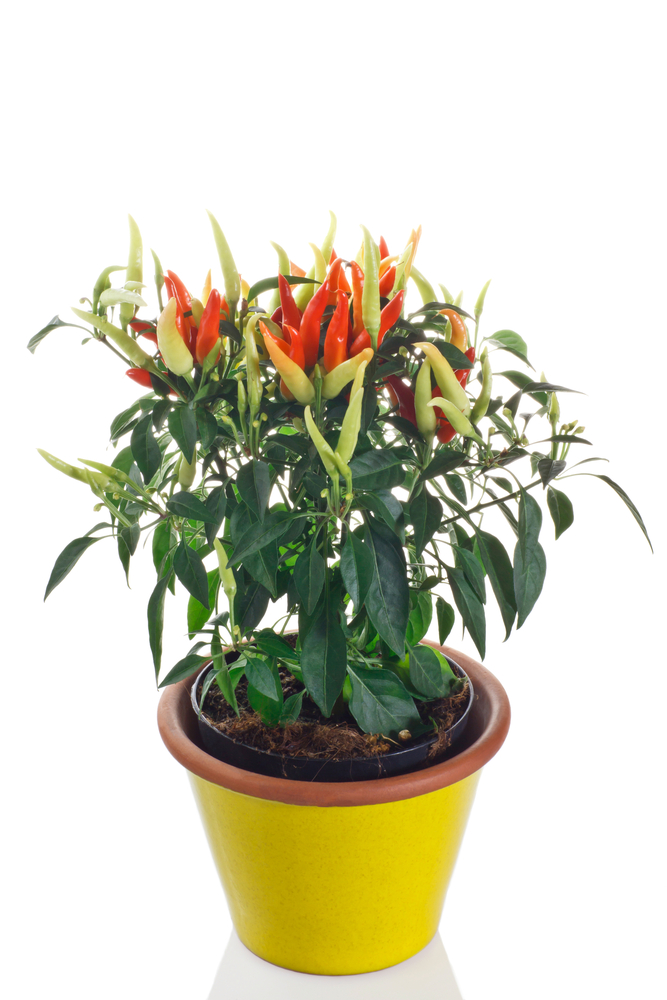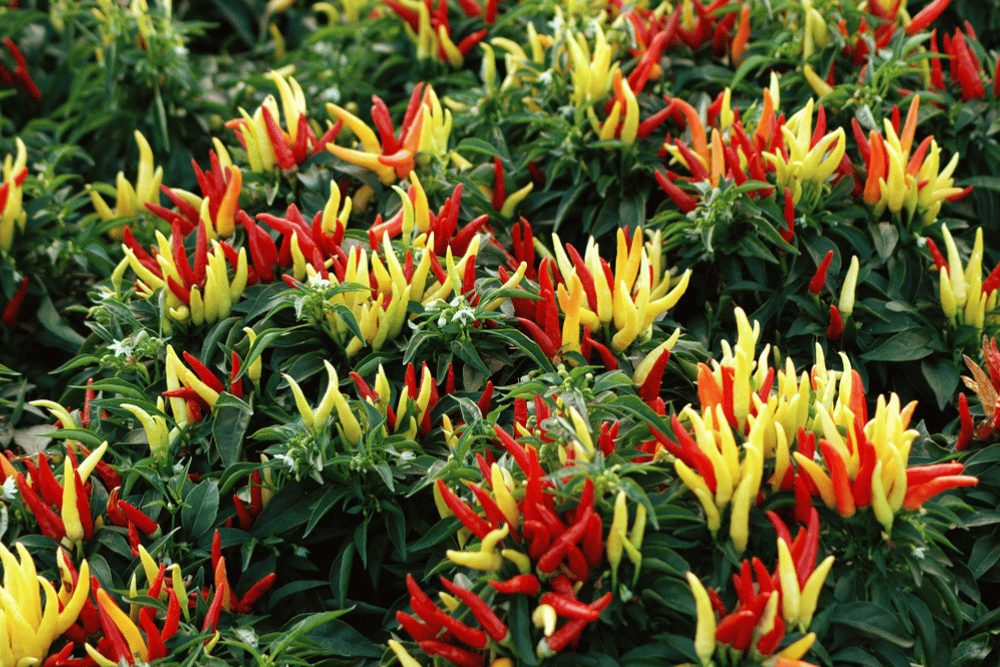Chilly chili peppers are considered family-friendly ornamental pepper, as the non-pungent fruit produces minimal heat. Chilly chili pepper plants are prolific growers, producing dozens of beautiful multi-colored peppers growing upward, similar to Medusa peppers.
What Are Chilly Chilis?
Chilly chili peppers are an ornamental pepper variety of Capsicum annuum developed by PanAmerican Seed Company with the goal of removing the heat from ornamental chili peppers.
Chilly chilis were a 2002 All America Selection winner in their national container suitable, flowers from seed, and ornamental peppers categories.
They are noted for their exceptional garden performance, yielding dozens of brilliantly colored peppers each growing season. The peppers are usually about 2 to 3 inches long and grow straight upwards amid the plant’s beautiful variegated foliage color.
Chilly chili fruit will mature from a bright green to a deep red, with several hues of green, yellow, and orange in between. Most plants will have a variety of peppers at different points in their growing cycle, giving each pepper plant a shock of many different colors all at once!
Are Chilly Chili Peppers Edible?
Chilly chili peppers are edible but aren’t typically used in cooking. They don’t provide a particularly complex flavor profile, being predominantly peppery in flavor, and offer very little heat.
If you’re looking to use your fully ripened chilly chilis while cooking in the kitchen, I’d recommend using them to add color to a dish. Despite not adding much heat or flavor to a dish, the beautiful colors found in chillys can accent a dish’s aesthetic presentation.
For example, adding thinly sliced chilly chilis to a salad or soup will make for a perfect garnish. You could even use whole chilly peppers to decorate the sides of your plate to add a fun flair to your entree without the risk of your guests accidentally consuming habanero-level hot peppers.
How Hot Are Chilly Chilis?
Chilly chilis were intentionally bred to remove the spiciness from the pepper, making them 1-1,000 SHUs on the Scoville scale. This puts them more on the level of the bell pepper even though they have the appearance of a spicy chili pepper.
Compared to your average jalapeno pepper, which is 2,500-8,000 SHUs, your typical chilly chili will be at least 10 times milder. This makes them the most child-safe ornamental pepper, as you don’t have to worry about your kids accidentally eating something that will overwhelm them.
How To Use Chilly Chili Peppers
I think chilly chili peppers are some of the best-looking ornamental peppers and have many great uses. From using them as small filler plants in your veggie and flower gardens to keeping them in hanging baskets around the house, chilly chilis will look fantastic wherever you place them.
The plants will only grow about 16 inches tall and 18 inches wide, so they are compact enough to incorporate into a wide variety of spaces. If you plan on keeping your chilly plants in containers, they will be small enough to keep on steps or ledges around your home and garden.

Where To Buy Chilly Chilis
Chilly chili pepper plants are readily available in many garden centers during your annual seasons. I recommend calling your local greenhouse to see if they have them in stock or are available to order through them.
If you cannot get chilly chilis locally, there are several online retailers. AAS’s website is an excellent place to find vendors online that offer the exact plant you’re looking for.
How To Grow Chilly Chili Ornamental Pepper Plants
Chilly chili pepper plants grow similarly to most other varieties of Capsicum annuum. They are fairly hardy chili plants that can endure various environments and weather patterns. However, let’s go over some of the best growing conditions that will allow your chilly plants to thrive!
- Light – Chilly plants must be in full sun for at least 6-8 hours daily. When growing outside, ensure that the plants are placed in an area that isn’t obstructed by the sun. Indoor chillys should be placed in a window that will allow the plant to get sunlight all day.
- Temperature – Chilly peppers are highly heat-tolerant and prefer to be in hotter climates. It’s recommended that they be in an environment that averages between 70-80°F, but they can survive temperatures as low as 60°F.
- Planting – If planting from seeds, allow 3-5 weeks for germination indoors. Once ready to plant, each plant needs 6-12 inches of spacing. Since they will grow 12-18 inches wide, the closer you plant each pepper plant, the fuller your pepper patch will appear.
- Days to Mature – Chilly pepper plants will take between 80-100 days to fully mature and yield peppers.
- Watering – Chillys require moderate water in well-drained soil. Depending on how well your soil drains, I’d recommend watering between 1-2 times weekly.
- Fertilizing – Once you notice your first small peppers growing, it’s time to fertilize! You’ll want to look for an “NPK 5-10-10” fertilizer containing 5% nitrogen, 10% phosphorus, and 10% potassium. This is the optimum nutrient balance for growing strong and beautiful peppers.

